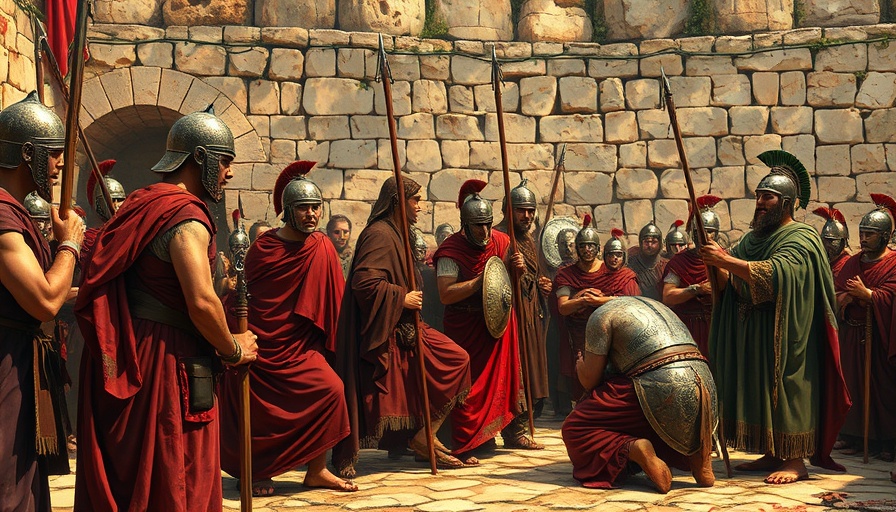
Understanding the Roman Scourging: A Journey Through History
The historical context behind the Roman scourging reveals a shocking yet profound reality that shaped the narrative of Christian faith. This brutal punishment, known for its severe cruelty, was not merely a formality in the punishment of criminals; it was often the precursor to crucifixion. In the Roman world, a scourging was intended to inflict maximum pain, weaken the victim, and serve as a public deterrent against wrongdoing. Through this lens, we gain insight into the immense suffering endured by Christ that has deep repercussions for believers today.
In The Horror of a Roman Scourging, the discussion dives into the implications of this historical punishment, exploring key insights that sparked deeper analysis on our end.
The Impact of Scourging on Modern Believers
As spirit-filled Christians, grappling with the reality of suffering can be challenging. Christ’s scourging embodies the ultimate sacrifice, a reminder of the pain He endured for humanity's redemption. This poignant aspect serves not only to evoke a sense of gratitude but also to spur believers into action—whether it be stepping into the realm of intercession or engaging fervently in the power of prayer. When understanding the depths of His suffering, prophetic believers are called to rise as watchmen, drawing strength from His example to face contemporary trials.
Lessons from Historical Suffering
A common misconception is that suffering is solely punitive or a sign of lacking faith. However, spiritual leaders like Rick Renner emphasize that suffering can cultivate strength and deepen one's relationship with God. By studying the scourging, we learn that pain can refine the spirit and propel us into a destiny filled with breakthroughs. This principle is depicted beautifully in the journeys of biblical figures such as Joseph and Job, who transformed their trials into testimonies of God’s faithfulness.
Future Insights: Courage in Adversity
In today's society, the parallels between ancient suffering and modern-day challenges become starkly evident. As our culture increasingly embraces secularism and hostility towards faith, believers are called to be courageous. By understanding the significance of the scourging, we are invited to view our own struggles through a prophetic lens, recognizing that God might use these very challenges to usher in revival and reform. This conviction influences how we engage in the Kingdom's work and inspires a deeper commitment to prayer, particularly among revivalists and intercessors eager to see lives transformed.
Building Community Through Shared Struggles
As faith-driven conservatives navigate the complexities of today’s world, aligning with fellow believers becomes essential. Communities that unite in prayer and prophetic insight create a spiritual powerhouse. Sharing personal stories of overcoming pain and trauma not only fosters support but also enriches the transformative journey that God has designed for each believer. This is where the concept of the remnant becomes crucial, as they take on the mantle of revivalists, ready to show the world the redemptive power found in suffering.
Action Steps for Tomorrow's Believers
As we reflect on these themes, it’s vital for Christians, especially generational leaders, to instill hope within our communities. Each of us, regardless of our ministry or sphere of influence, can take tangible steps to promote healing through shared testimonies and prayer. Engaging in conversations around suffering, fostering an understanding of its role in faith, and relying on historical examples can galvanize commitment among Christians today to embrace their divine calling.
The video The Horror of a Roman Scourging serves as a vital exploration of this harsh reality. By analyzing the scourging, we are compelled to evaluate how these historical narratives influence our spiritual journeys.
 Add Row
Add Row  Add
Add 








Write A Comment